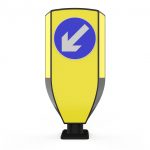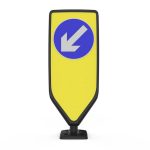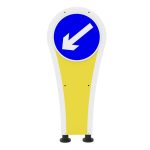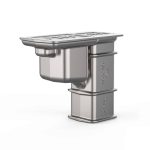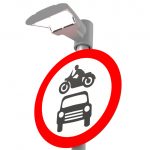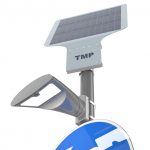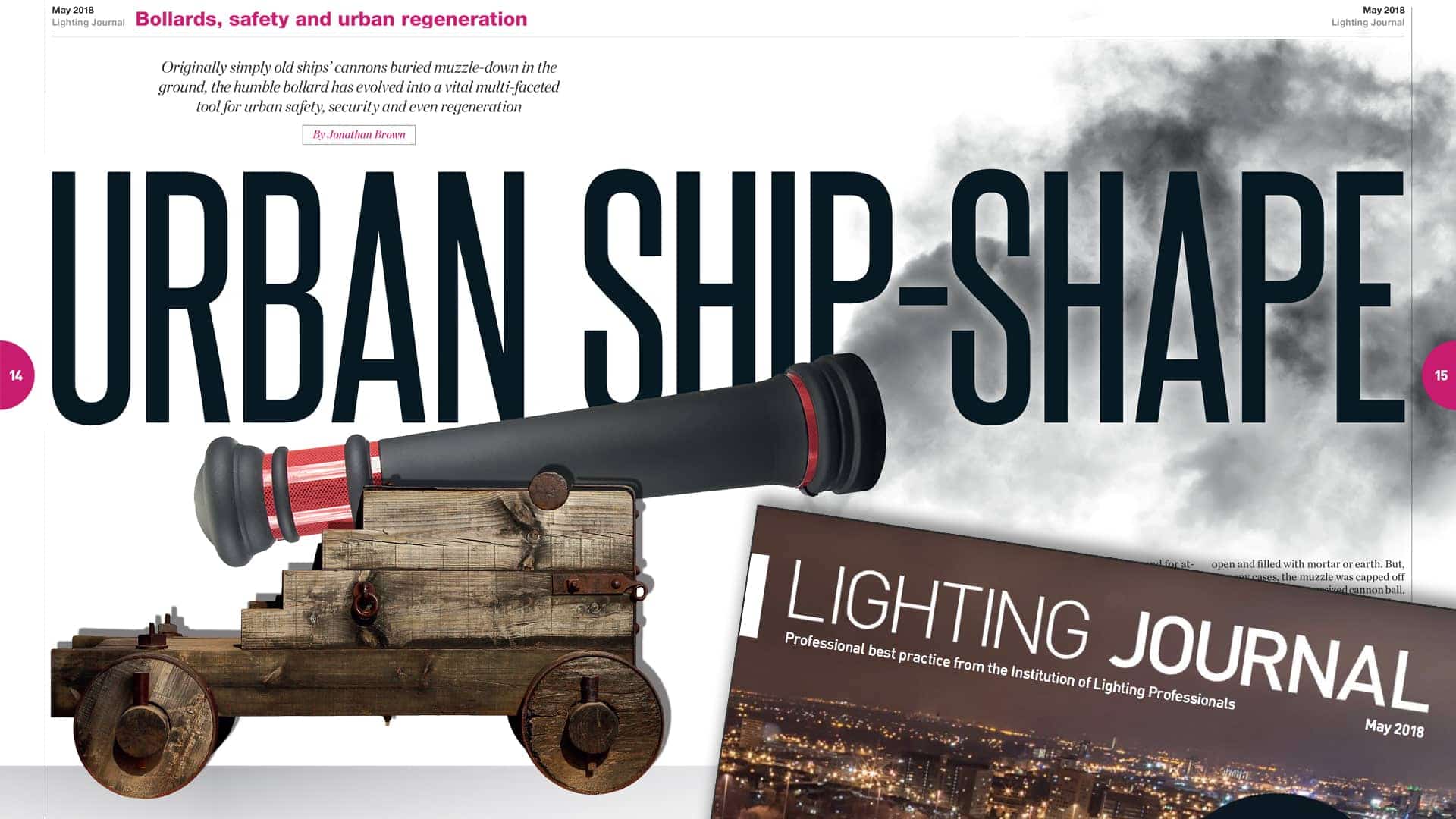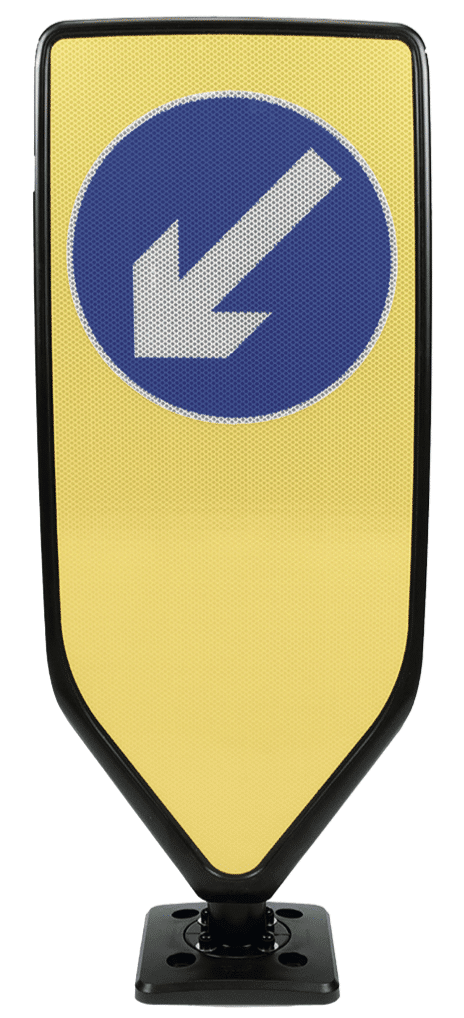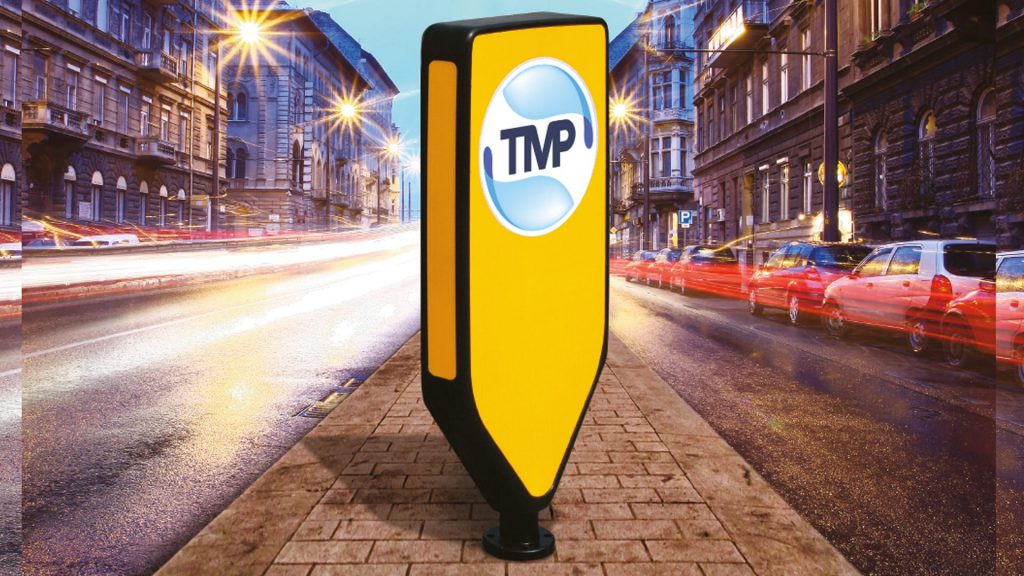Originally simply old ship’s cannons buried muzzle-down in the ground, the humble bollard has evolved into a vital multi-faceted tool for urban safety, security and even regeneration
This article intends to examine bollards and the part they play in the urban environment, notably their safety aspects and how their use contributes to urban regeneration. Bollards can be categorised into various groups, and this article will focus on how those used on the highway as low-level traffic signs – traffic bollards and street bollards – are also used for aesthetic and safety purposes.
A BRIEF HISTORY OF THE BOLLARD
Historically the word ‘bollard’ referred to a post on a quay or ship and was used principally to moor boats and ships.
Originating in the 17th and 18th centuries, many bollards were actually old cannons buried muzzle-first. Two-thirds would be buried leaving the back of the cannon, the breech, above ground for attaching ropes from the ships. Even in the 19th century, when many bollards became purpose-made, they often retained the ‘cannon’ shape.
It wasn’t until the 18th century that we first saw bollards used for traffic management, either to limit access, control speed or separate pedestrians and roadside assets. The same century saw the introduction of timber bollards, specifically oak, to protect pedestrians from injury by carriages. The best documented case of this is the ‘two oak-posts’ set up next to the medieval Eleanor Cross at Waltham Cross, Hertfordshire, in 1721, at the expense of the Society of Antiquaries of London.
When decommissioned cannons were used (which came in all shapes and sizes) sometimes the muzzle was simply left open and filled with mortar or earth. But, in many cases, the muzzle was capped off by hammering in an oversized cannon ball. This canon and ball design bollard has stood the test of time and is still prevalent today in many street bollards.
The early 20th century saw the introduction of the illuminated traffic bollard, very different from the rigid cast iron and timber bollards of yesteryear. These ‘modern’ bollards carried low-level road signs, such as ‘Keep Left’ and ‘No Entry’ and were internally illuminated by an underground light unit visible day and night. Illuminated bollards were less of physical enforcement device and more a supplement to street signs and street lighting, providing a visual cue to approaching drivers that an obstacle exists ahead.
The 20th century also saw many advances in plastic as a construction material, especially the invention of polyethylene. This new material was revolutionary for bollards. Suddenly traditional, decorative and internally-illuminated bollards could be produced at a much lower cost, were safer if hit, and were easier to install as they only weighed a fraction of the weight.
The bollards we see on the highway today are a mixture of internally-illuminated and ‘Retro-reflective Self-righting Bollards’ or RSRBs. The RSRB was actually invented by us, then known as Traffic Management Products (now TMP Solutions), back in the early 2000s. Both revolutionary and innovative for its time, the RSRB was able to deliver clear driver communication day and night, whilst being resilient to impact and needing no external power.
THE SAFETY BOLLARD
The RSRB was invented to improve safety for motorists and has now been adopted by all local authorities throughout the UK and is used where an illuminated bollard is not required.
It delivers many advantages for the motorist and the urban environment. First, RSRBs are retroreflective, which means they use the light directed at them from a vehicle’s headlights to highlight themselves at night.
They achieve this because the bollard has front, side and sometimes rear panels of prismatic material that reflects the light. BS 8442:2015 govern the size and position of the panels, and BS EN 12899-1:2007 govern the amount of light reflected to motorists. Compliance with BS 8442:2015 is now a mandatory requirement under TSRGD2016.
The fact the bollard is retro-reflective means an internal light source is not needed, therefore no external power is needed for the bollard to function. Typically, RSRBs require comparatively little energy to produce and no energy to function.
Maintenance is just a question of a scheduled clean with soapy water to ensure the reflectivity meets the standards. This all results in a very ‘clean’ solution and, once the production energy is offset, zero carbon emissions. Many RSRBs, such as the TMP EVO-N, are also recyclable at the end of their life, further reducing their impact on our environment’s resources.
The safety benefit for the motorist comes from the self-righting element of RSRBs. Self-righting bollards are designed to return to an upright position following an impact, in other words passive safety, as governed by BS EN 12767:2007 Passive safety of support structures for road equipment: requirements, classification and test methods.
BS EN 12767 specifies performance requirements and defines levels in passive safety terms to reduce the severity of injury to the occupants of vehicles impacting with the permanent road equipment support structures. Consideration is also given to other traffic and pedestrians.
Three energy-absorption types are considered and test methods for determining the level of performance under various conditions of impact are given. It is important to note that levels of performance relate to test conditions; real-world conditions and types of impact will, of course, vary.
RSRBs, too, are not indestructible. The best RSRBs in the UK will be designed and tested to achieve 100:NE:4. This means that at 100kph, in test conditions, the vehicle impacting the bollard lost little or no momentum, continued its onwards travel and the bollard returned to its upright stance intact. This standard is designed to show that the bollard would not slow or stop a vehicle on impact, therefore avoiding sudden deceleration and/or impact for the occupant, in other words far safer than hitting a metal or timber bollard.
Passive safety is not just limited to traffic bollards. Many street bollards benefit from being classified as passively safe. For example, a street bollard such as the TMP Orion is available as a rebound bollard, and fully-certified passively safe to performance standard 100:NE:4.
Bollards such as the Orion are often used as part of traffic-calming schemes to highlight chicanes or road narrowing, which can be very effective in urban areas. But, as the bollard is located on the edge of the kerb, it can be very prone to impact. Rebound or passively safe bollards therefore highlight the hazard, are safer for the motorist and better for budgets.
Like RSRBs, rebound street bollards are not indestructible. But, certainly in the case of the TMP range, they are designed to withstand impacts in test conditions andreal-world conditions.
URBAN REGENERATION AND BOLLARDS
Both street and traffic bollards can be an effective tool in urban regeneration. There are so many applications where bollards can add value, either financial or in safety. These include:
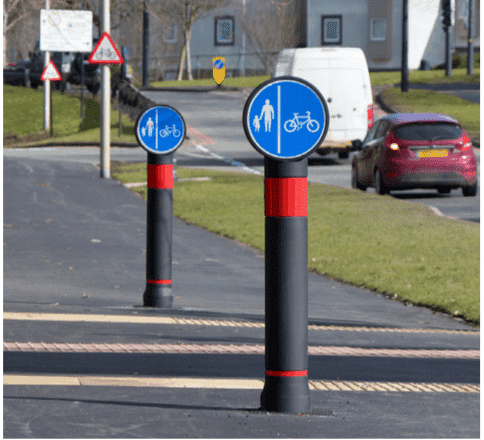 Cycle schemes.Cycling to work, and in general, helps reduce pollution and carbon emissions. Many local authorities are therefore improving existing or installing new cycle routes across their constituencies.
Cycle schemes.Cycling to work, and in general, helps reduce pollution and carbon emissions. Many local authorities are therefore improving existing or installing new cycle routes across their constituencies.
Bollards can play a vital role by highlighting and segregating the cycle path from pedestrians and motorists. Sign-carrying bollards such as the TMP Pictor are a perfect example of this.
Splitting a footpath for pedestrian and cycle use can be a great solution, and can be achieved by using a sign-carrying bollard displaying diagram 957 ‘Segregated route for use by pedal cycles and pedestrians’.
Rotationally-mouldedusing an advanced linear low-density polyethylene (LLDPE), these rigid bollards are durable, resistant to ultraviolet light and have great low-temperature impact resistance. Moreover, bollards made from polyethylene weigh just a fraction of a cast-iron bollard, meaning they can be installed in just a matter of minutes by one operative.
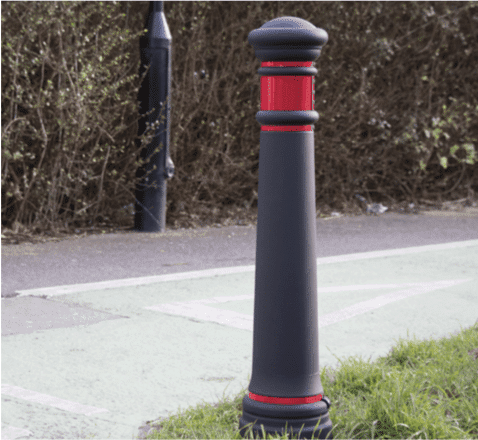 Hostile vehicle mitigation.This is, of course, a hot topic all around the world at present, with reports of vehicles leaving the highway, entering pedestrian areas and causing death and serious injury happening on what seems to be a monthly basis.
Hostile vehicle mitigation.This is, of course, a hot topic all around the world at present, with reports of vehicles leaving the highway, entering pedestrian areas and causing death and serious injury happening on what seems to be a monthly basis.
As ILP President Alan Jaques highlighted last year (‘Curbing terror’, Lighting JournalSeptember 2017, vol 82, no 8) street furniture can be an invaluable first line of defence in this scenario. Many street bollards, such as the TMP Manchester anti-ram bollard, can be used securely to protect pedestrians and other street-side assets from vehicles.
These bollards have an aesthetically pleasing polyethylene outer over a 5mm-thick steel core. The ability to match the existing street-scene makes these bollards a popular choice for low profile yet effective protection. A vehicle entering a pedestrian space is not always something done intentionally and low-profile protection of this kind is a useful tool to improve safety without intimidating local residents.
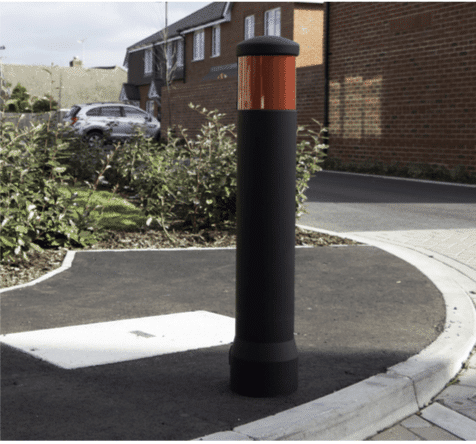 Traffic calming.Reducing vehicle speeds in urban areas undoubtedly improves safety for pedestrians and motorists alike. Bollards are a great way of highlighting traffic-calming
Traffic calming.Reducing vehicle speeds in urban areas undoubtedly improves safety for pedestrians and motorists alike. Bollards are a great way of highlighting traffic-calming
measures, with passively safe bollards such as the TMP Cetus a good option. The Cetus again achieves 100:NE:4 and, should a vehicle impact the bollard, it will rebound on impact and reduce the risk of injury to the occupants.
This is not only safer for the motorists but, as rebound bollards are designed to withstand multiple impacts, they are great for budgets, too.
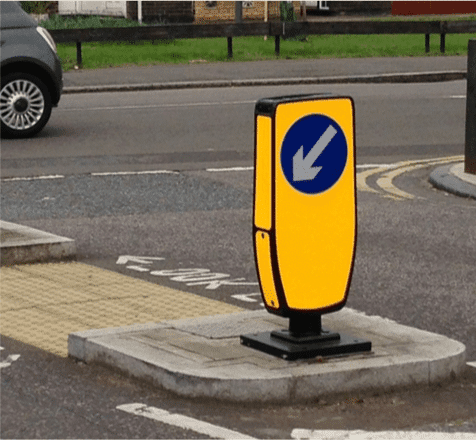 New routes.In many urban regeneration projects, roads and traffic-flows will be updated or modified. RSRBs are the perfect solution for traffic control displaying low-level signage.
New routes.In many urban regeneration projects, roads and traffic-flows will be updated or modified. RSRBs are the perfect solution for traffic control displaying low-level signage.
RSRBs can quickly be installed using concrete-in foundation cages, retrofit base light conversion plates or ground sockets/NAL sockets. They of course need no external power, are highly visible day and night and can be passively safe.
Even when an illuminated traffic bollard is required, some RSRBs (such as the solar-powered EVO-S) have an illuminated sign-face that meets the appropriate lighting level to BS EN 12899-1:2007. These completely self-contained solar solutions replace the need for expensive ground works, have zero running costs and need minimal maintenance.
Access.Combining bollards with ground sockets is a great way of providing temporary access to a location as part of an urban regeneration project. LockSafe, a system pioneered by us, is a bollard root system that is compatible with industry-standard sockets to allow bollards to be removed and installed in seconds using a special key. Not only is this great for giving temporary vehicle access to pedestrian areas, but in high-risk traffic-calming locations bollards can be quickly and efficiently replaced.
CONCLUSION
This article is by no means the be-all and end-all of traffic bollards. It is simply a summary of their history, purpose and example of uses in our urban environment. There are some great products out there that can really make a difference to the safety and appearance of our streetscape, but not all are created equal. As a lighting professional, it is vital when specifying a bollard for your next project that you make sure it is fully compliant and fit for purpose; that you carry out your due diligence and chose a solution that ticks all the boxes. Ultimately, the purchase price is far less important than whole-life costs. When choosing a supplier, choose a manufacturer – and (although of course I would say this) you certainly cannot go wrong by choosing the people who invented the bollard as we know it today.
Visit the ILP Lighting Journal: https://www.theilp.org.uk/resources/the-lighting-journal/
